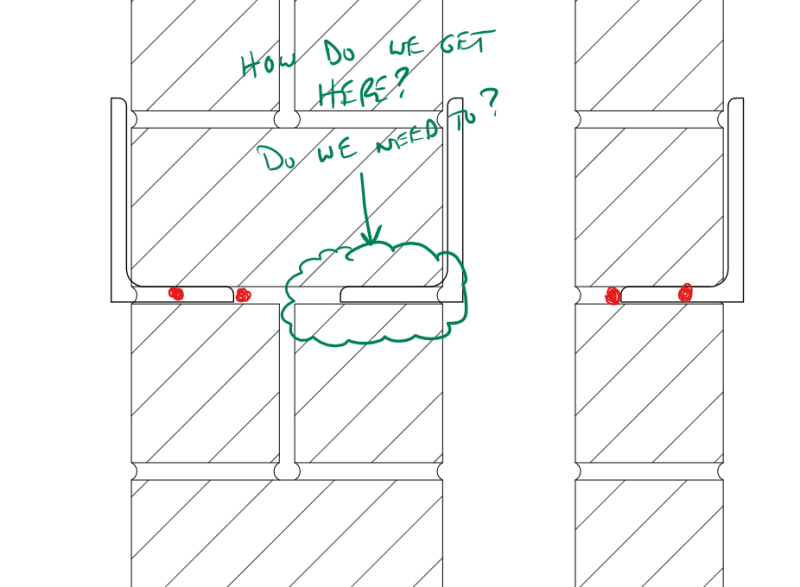JStructsteel
Structural
Looking at a building tomorrow that the client wants to open up a wall with a window. He's reported its 2 wythe outside, air gap, then inner wythe wall. Was wondering a few options to open it up.
First option is cut in a groove for an angle, and slide in. Question on this is what stops the wall dropping when they cut the groove? I get arching action, but locally could bricks slide down?
Other is to do a clamping type beam each side, but with the air gap, could cause failure if tightened too much.
I guess option one is the best, what is worry some is the inside wythe, what collects that load? The header bricks? Cut the groove below those?
The client is looking for me to be the expert, but in reality, isnt this the contractors issue, I am just giving suggested construction methods?
First option is cut in a groove for an angle, and slide in. Question on this is what stops the wall dropping when they cut the groove? I get arching action, but locally could bricks slide down?
Other is to do a clamping type beam each side, but with the air gap, could cause failure if tightened too much.
I guess option one is the best, what is worry some is the inside wythe, what collects that load? The header bricks? Cut the groove below those?
The client is looking for me to be the expert, but in reality, isnt this the contractors issue, I am just giving suggested construction methods?

